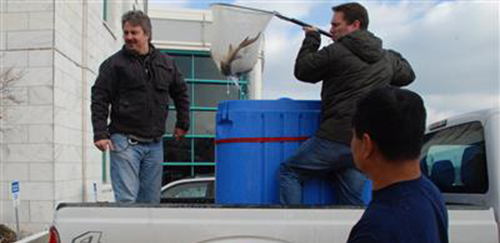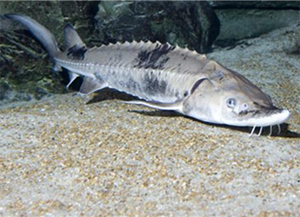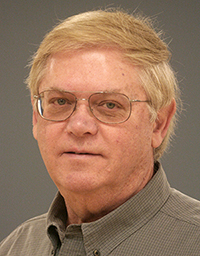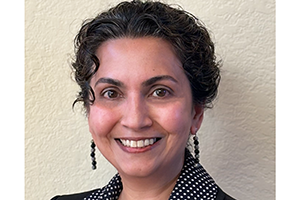
Making the 90-mile drive between Milwaukee and Chicago is generally unremarkable thanks to modern roadways. Yet one recent trip was anything but unremarkable.

That’s because Fred Binkowski, senior scientist with the UWM School of Freshwater Sciences and a Wisconsin Sea Grant aquaculture specialist, was transporting something very special – something even prehistoric – on that jaunt south on I-94.
In a 300-gallon tank, he was trucking the biological equivalent of 135 million years of Great Lakes ecosystem history in the form of 14 lake sturgeon bound for the Shedd Aquarium.
The sturgeon will enhance the aquarium’s freshly revamped “At Home on the Great Lakes” exhibit. They should be on display sometime in spring 2014, following quarantine for the safety of all the fish already at the Shedd and the new ones soon to take up residence.
“These fish represent a tale of evolutionary survival, triumph over human callousness, and a renewed commitment to their habitats and health,” Binkowski says. “Taking them to the Shedd Aquarium means that many more people will be exposed to them. People will learn about how sturgeon have been on this planet for millions of years – an important species for Great Lakes ecosystems.”
Binkowski delivered the fish to Jim Robinett, the Shedd’s senior vice president of external and regulatory affairs. “Lake Sturgeon are an integral part to telling our Great Lakes stories in that gallery,” says Robinett. He terms lake sturgeon a keystone species in the Great Lakes, and adds that once Shedd guests become interested in and inspired by the fish, “Then you can share conservation messages.”

Binkowski expects the fish to fare quite well in their new home, a 6,000-gallon tank with a re-created Great Lakes native shoreline.
Often, the lake sturgeon’s wild home has not been so hospitable. In the early part of the last century, the fish were nearly extirpated from Great Lakes waters, where they were once prevalent.
Killed as a nuisance fish by early settlers, lake sturgeon were later overfished for their caviar and meat. Their numbers also were affected by pollution from the lumber industry and agricultural runoff.
The fish are now protected but still face challenges posed by pollution, climate change and dams.
Binkowski has devoted years to the study of lake sturgeon, which can reach 200 pounds and nine feet in length. They are the largest fish in North America and can live up to 150 years.
Binkowski has forged strong partnerships with the Wisconsin Department of Natural Resources; Sturgeon for Tomorrow, a private citizens’ conservation group; and the Native American community, which reveres sturgeon, to bring the fish back from virtual disappearance in state waters.
These coordinated efforts among partners, along with Binkowski’s lab in Milwaukee, where he annually studies and raises fish that are eventually stocked in the Lake Winnebago system, mean that Wisconsin now boasts the world’s healthiest population of lake sturgeon, he said.
Sharing some of his fish to further the education of the more than 2 million guests who pass through the Shedd Aquarium’s doors each year will ensure more people will be exposed to these gentle giants.
And perhaps the growing awareness will lead to a stronger commitment to restoring and protecting the sturgeon’s habitat, and the fish themselves. “There could be a future where people can see Lake Sturgeon not only at the Shedd but in all the fish’s native Great Lakes waters, too,” Binkowski says.







